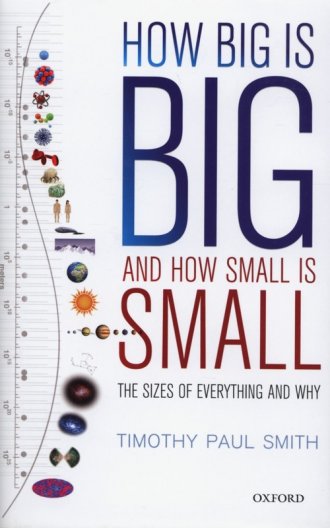How Big Is Big and How Small Is Small. The Sizes of Everything and Why
Timothy Paul Smith

| Dane szczegółowe: | |
| Wydawca: | Oxford University Press |
| Rok wyd.: | 2013 |
| Oprawa: | Twarda z obwolutą |
| Ilość stron: | 256 s. |
| Wymiar: | 140x220 mm |
| EAN: | 9780199681198 |
| ISBN: | 978-01-9968-119-8 |
| Data: | 2016-03-10 |
Opis książki:
This book is about how big is the universe and how small are quarks, and what are the sizes of dozens of things between these two extremes. It describes the sizes of atoms and planets, quarks and galaxies, cells and sequoias. It is a romp through forty-five orders of magnitude from the smallest sub-nuclear particles we have measured, to the edge of the observed universe. It also looks at time, from the epic age of the cosmos to the fleeting lifetimes of ethereal particles. It is a narrative that trips its way from stellar magnitudes to the clocks on GPS satellites, from the nearly logarithmic scales of a piano keyboard through a system of numbers invented by Archimedes and on to the measurement of the size of an atom.Why do some things happen at certain scales? Why are cells a hundred thousandths of a meter across? Why are stars never smaller than about 100 million meters in diameter? Why are trees limited to about 120 meters in height? Why are planets spherical, but asteroids not? Often the size of an object is determined by something simple but quite unexpected. The size of a cell and a star depend in part on the ratio of surface area to volume. The divide between the size of a spherical planet and an irregular asteroid is the balance point between the gravitational forces and the chemical forces in nature.
Most importantly, with a very few basic principles, it all makes sense. The world really is a most reasonable place.
Książka "How Big Is Big and How Small Is Small. The Sizes of Everything and Why" - Timothy Paul Smith - oprawa Twarda z obwolutą - Wydawnictwo Oxford University Press. Książka posiada 256 stron i została wydana w 2013 r.

